Mash pH matters in homebrewing because it influences enzyme activity and starch conversion, affecting your beer’s flavor and clarity. The perfect mash pH range is between 5.2 and 5.5, which enhances fermentation efficiency and hop extraction. If pH is too high, off-flavors and astringency can occur. To maintain ideal pH, monitor water chemistry, use a calibrated pH meter, and consider adding acids or acid malts. Understanding these tools will help guarantee a successful brewing process.
At a Glance
- Optimal mash pH (5.2-5.5) enhances enzyme activity, improving starch conversion efficiency during brewing.
- Lower mash pH increases hop extraction rates, leading to better flavor clarity in the final beer.
- High mash pH can produce off-flavors and astringency, negatively impacting beer quality.
- Proper mash pH management helps inhibit bacterial growth, promoting a cleaner fermentation process.
- Accurate measurement and adjustment of mash pH ensure consistent brewing results and superior beer profiles.
The Importance of Ph in Homebrewing
Understanding the significance of mash pH is essential for any homebrewer who wants to produce high-quality beer. The ideal mash pH range of 5.2-5.5 maximizes enzyme activity, enhancing starch conversion and fermentation efficiency.
A lower mash pH, closer to 5.2, improves hop extraction rates, resulting in better beer clarity and flavor stability. Conversely, high mash pH can lead to off-flavors and astringency, negatively affecting your brew’s quality.
It’s critical to measure and adjust pH accurately, as variations in water chemistry and malt characteristics can greatly alter the final outcome, ensuring consistent and exceptional beer every time.
Helpful Hints:
- Aim for 5.2-5.5 pH during mash.
- Test water chemistry before brewing.
- Adjust pH as needed for best results.
Understanding Water Chemistry and Its Effects on Mash Ph
Water chemistry greatly influences mash pH, which ultimately affects your brewing process and beer quality.
Understanding the relationship between water chemistry and malt types is vital for ideal results. Here are three key points to reflect on:
Understanding water chemistry and malt types is crucial for achieving optimal brewing results.
- High bicarbonate levels can raise mash pH, hindering enzyme activity.
- Dark malts lower mash pH due to their acidity, helping maintain a perfect pH range.
- Adjusting water profiles to match your grain bill guarantees the ideal pH range of 5.2 to 5.6, supporting effective enzyme performance.
Effective water treatment is essential for achieving desired acidity levels and enhancing your brewing outcomes.
Techniques for Measuring Mash Ph Accurately
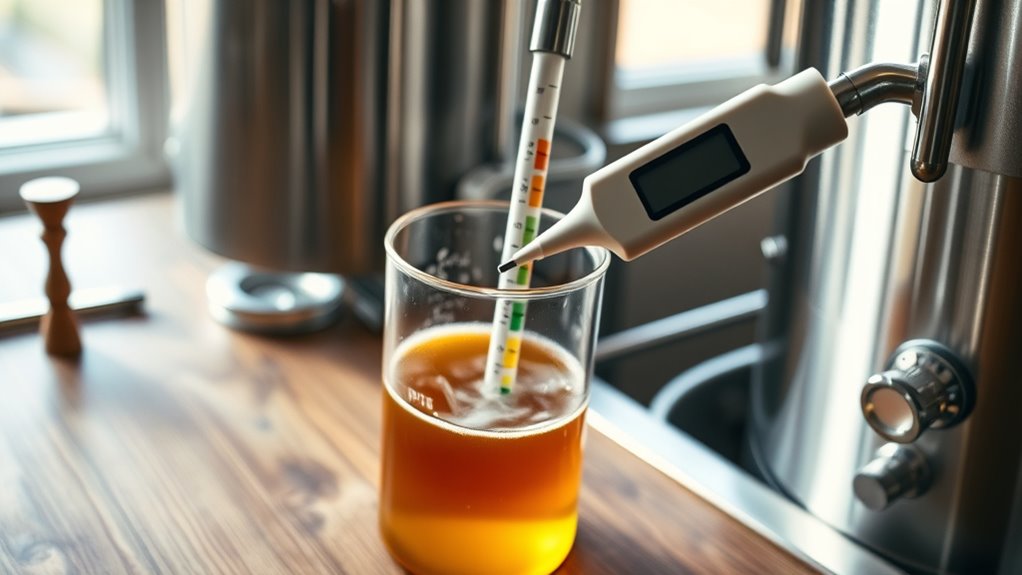
Measuring mash pH accurately is a critical step in the brewing process, as it directly influences enzyme performance, fermentation, and the overall flavor of your beer.
To guarantee precise readings, use a calibrated pH meter. Soak the electrode in storage solution when not in use, and calibrate with pH 7.01 and 4.01 buffers.
Remember to cool wort samples to room temperature before measurement, as high temperatures can artificially raise pH readings. Allow the pH meter to stabilize for 10-15 minutes for accurate measurement, and consistently monitor and adjust mash pH to enhance fermentation efficiency and beer quality.
Helpful Hints:
- Regular calibration improves reliability.
- Monitor throughout the brewing process.
Methods for Adjusting Mash Ph Effectively
Adjusting mash pH is crucial for attaining the desired flavor and efficiency in your brewing process.
To effectively modify your mash pH, consider these methods:
- Add Organic Acids: Use lactic or phosphoric acid, measuring carefully based on your initial pH and water profile.
- Incorporate Acid Malt: Adding up to 5% acid malt in your grain bill can naturally lower mash pH, contributing lactic acid.
- Monitor Sparge Water pH: Verify sparge water pH complements the mash pH, maintaining overall wort balance and enhancing fermentation efficiency.
Aim for a target pH of 5.2 to 5.5 for maximum enzyme activity.
The Impact of Optimal Mash Ph on Beer Quality
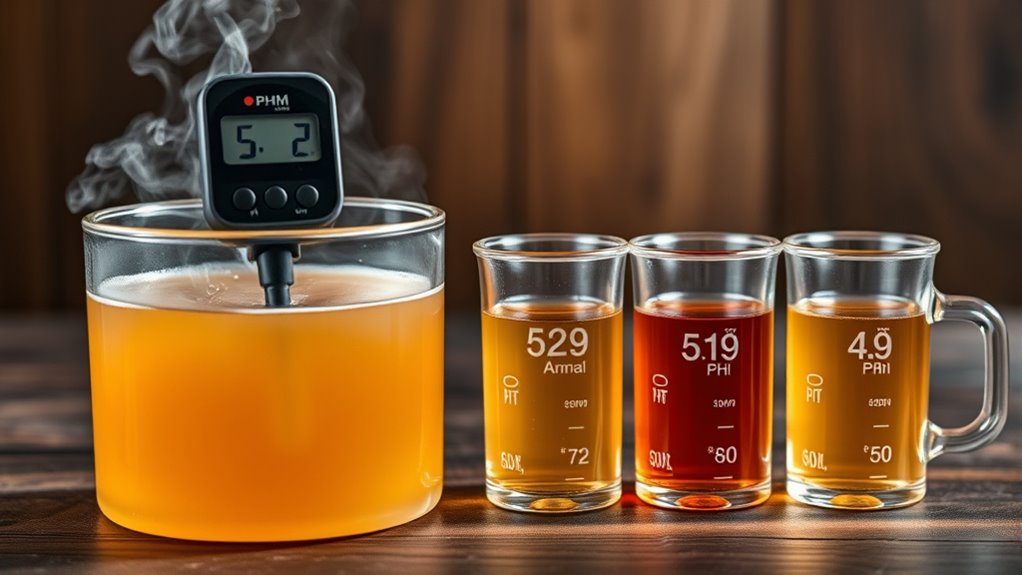
The pH level of your mash plays a critical role in determining the quality of the beer you produce. Maintaining an ideal mash pH between 5.2 and 5.6 enhances enzyme activity, promoting efficient starch conversion into sugars. This process is essential for maximizing extract potential.
Additionally, lower pH levels improve hop extraction rates, enriching hop character and flavor stability. Proper pH management also inhibits bacterial growth during fermentation, reducing off-flavors and ensuring cleaner profiles.
Ultimately, the right mash pH enhances clarity and stability, contributing to a more aesthetically pleasing beer with superior flavor quality.
Helpful Hints:
- Monitor pH regularly.
- Adjust as needed.
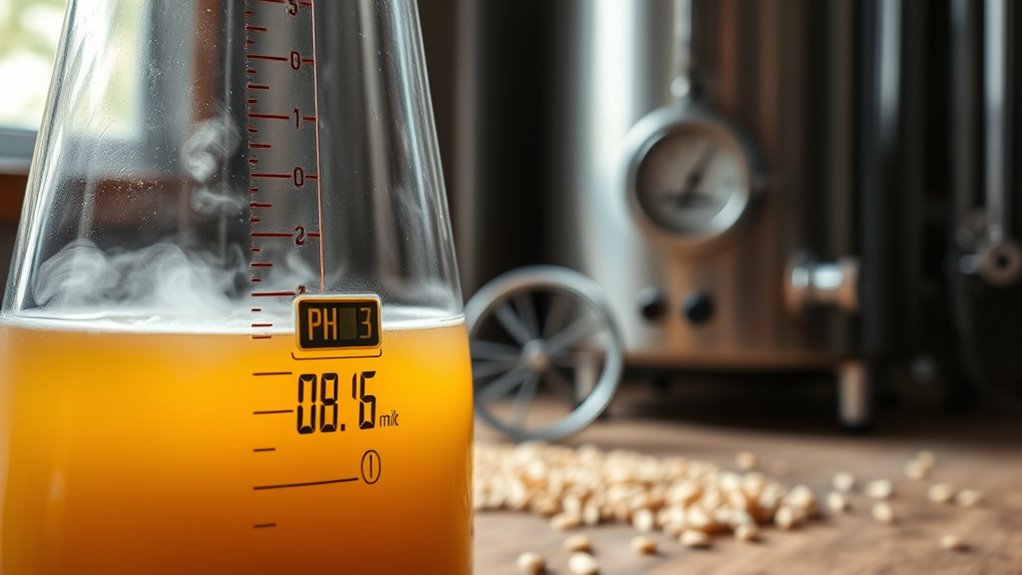
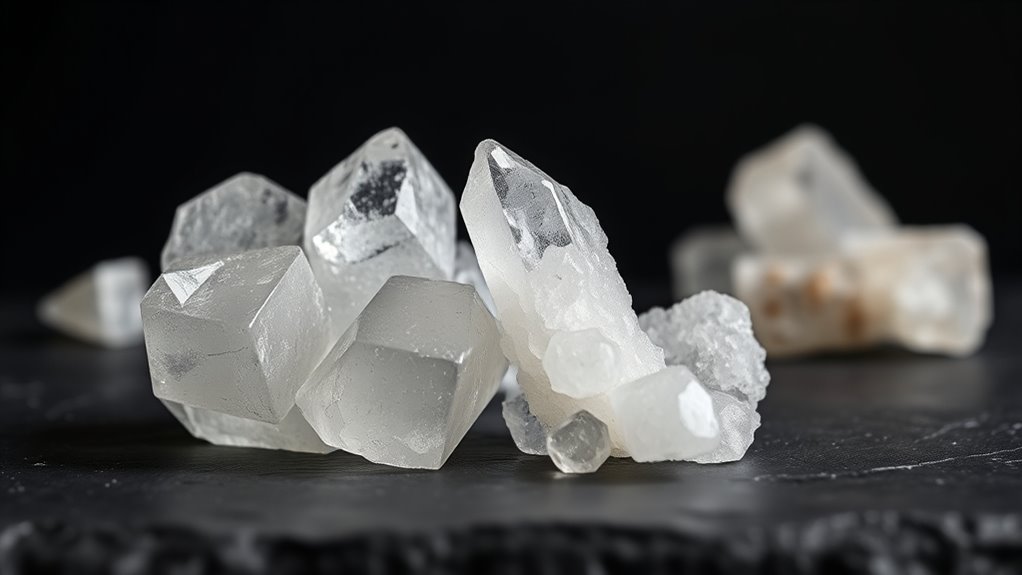
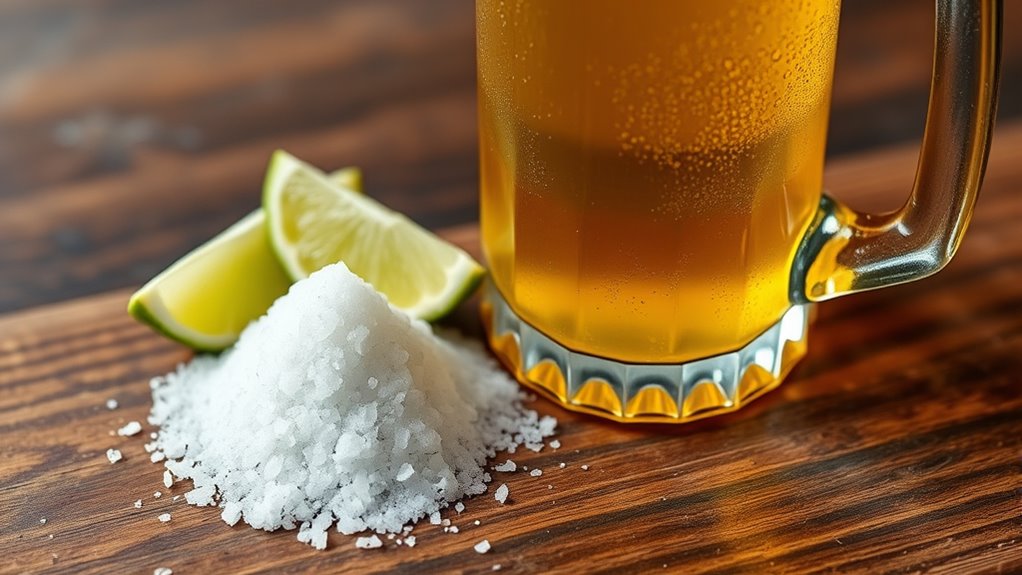

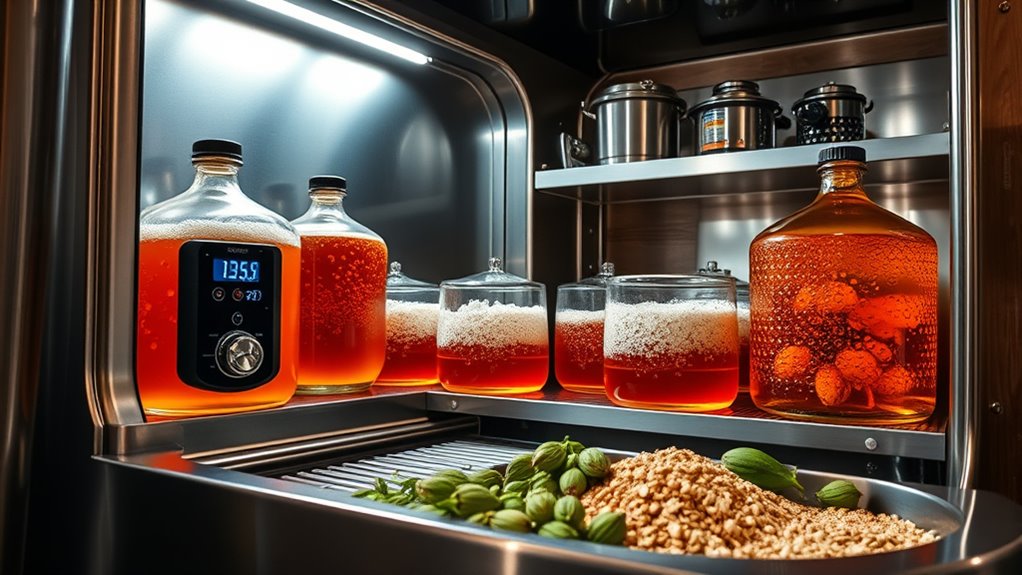
4 comments
Comments are closed.